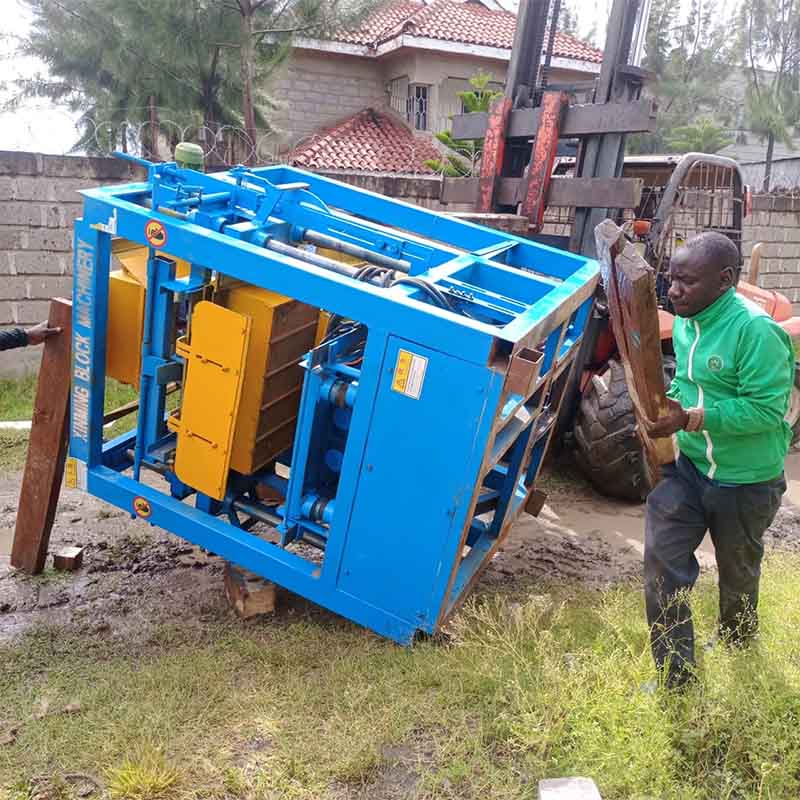
Title: Leveraging Digital Twins and Simulation in Block Production Planning
Introduction
The block production industry, like many others, is undergoing a transformation thanks to advanced digital technologies. Among these transformative tools, digital twins and simulation have emerged as powerful assets in optimizing and streamlining production planning and processes. In this article, we will explore the role of digital twins and simulation in block production planning, their benefits, and how companies can harness these technologies to enhance efficiency, quality, and sustainability in the manufacturing process.
The Role of Digital Twins and Simulation
**Digital Twin:** A digital twin is a virtual representation of a physical object or system. In the context of block production, it involves creating a digital replica of the production facility, machinery, and the blocks themselves. This digital twin is updated in real-time and can be used for various purposes, from monitoring equipment status to optimizing production processes.
**Simulation:** Simulation is the process of imitating a real-world system or process using a digital model. In block production, simulation can replicate and analyze the behavior of various elements, such as machinery, materials, and logistics, to predict outcomes and identify areas for improvement.
Leveraging digital twins and simulation in block production planning provides several key benefits:
1. **Efficient Planning:** Digital twins enable the visualization of the entire production process, allowing planners to optimize layouts, workflows, and resource allocation.
2. **Cost Reduction:** By identifying and mitigating potential issues through simulation, companies can minimize waste, reduce downtime, and optimize resource use.
3. **Quality Control:** Digital twins can be used to monitor production quality in real-time, ensuring that blocks meet industry standards and customer requirements.
4. **Sustainability:** Optimization through simulation can lead to reduced energy consumption, waste generation, and environmental impact, aligning with sustainability goals.
5. **Predictive Maintenance:** Digital twins enable predictive maintenance, identifying equipment issues before they lead to costly breakdowns.
6. **Enhanced Training:** Simulation can serve as a training tool for employees, allowing them to learn and practice new processes and techniques in a risk-free environment.
7. **Innovation:** These technologies facilitate experimentation with new manufacturing methods and materials, driving innovation and competitiveness.
Practical Applications of Digital Twins and Simulation in Block Production
1. **Production Process Optimization:**
Digital twins can replicate the entire production process, from raw material input to block output. By running simulations, companies can experiment with different configurations, machine settings, and production strategies to optimize efficiency and output quality.
2. **Energy Efficiency Improvement:**
Simulation can model energy consumption in real-time and evaluate the impact of energy-efficient technologies, such as energy-efficient motors and lighting systems. This enables companies to reduce energy costs and environmental impact.
3. **Quality Assurance:**
Digital twins can monitor the quality of blocks in real-time. Any deviations from quality standards can trigger immediate adjustments or stoppages in the production process to prevent waste.
4. **Inventory Management:**
By simulating inventory levels and demand patterns, companies can optimize their stock levels to minimize carrying costs and waste while ensuring timely deliveries to customers.
5. **Supply Chain Optimization:**
Simulation models can assess the efficiency of the supply chain, from raw material procurement to product delivery. Companies can identify bottlenecks, streamline logistics, and reduce lead times.
6. **Machine Maintenance:**
Predictive maintenance models, enabled by digital twins, can monitor machine performance and trigger alerts when maintenance is required. This minimizes downtime and extends the life of equipment.
7. **Employee Training:**
Simulations provide a safe and controlled environment for training new employees and upskilling existing ones, ensuring that they are proficient in operating and maintaining equipment.
Case Study: Implementing Digital Twins and Simulation
ABC Blocks, a medium-sized block production company, sought to optimize its production process, reduce waste, and enhance energy efficiency. They decided to implement digital twins and simulation to achieve these goals.
**Production Process Optimization:**
ABC Blocks created a digital twin of its production facility, including machinery and materials. Using simulation, they tested different block production configurations and identified the most efficient layout and machine settings.
**Energy Efficiency Improvement:**
The digital twin also included real-time monitoring of energy consumption. By simulating the introduction of energy-efficient lighting systems and equipment, ABC Blocks reduced its energy costs by 20%.
**Quality Assurance:**
Using the digital twin, ABC Blocks implemented a real-time quality monitoring system. Any deviations in block quality triggered immediate adjustments to maintain consistent product quality.
**Inventory Management:**
ABC Blocks optimized its inventory levels by simulating demand patterns and stock levels. This reduced carrying costs by 15% while ensuring on-time deliveries.
**Machine Maintenance:**
The company implemented predictive maintenance by continuously monitoring machine performance through the digital twin. This reduced unplanned downtime by 30%.
**Employee Training:**
ABC Blocks used simulation to train its workforce in operating and maintaining equipment efficiently. This resulted in a more skilled and confident workforce.
Conclusion
Digital twins and simulation are revolutionizing the block production industry by providing tools for efficient planning, cost reduction, quality assurance, sustainability, predictive maintenance, and innovation. As companies seek to enhance their operations, improve product quality, and meet sustainability goals, these technologies play a pivotal role in achieving those objectives.
The successful implementation of digital twins and simulation requires a commitment to embracing new technologies, investing in the necessary infrastructure, and fostering a culture of continuous improvement. By doing so, block production companies can remain competitive in a rapidly changing industry and meet the growing demand for sustainable and high-quality building materials. Leveraging digital twins and simulation in production planning is a strategic move that can lead to long-term success and growth in the block production sector.
